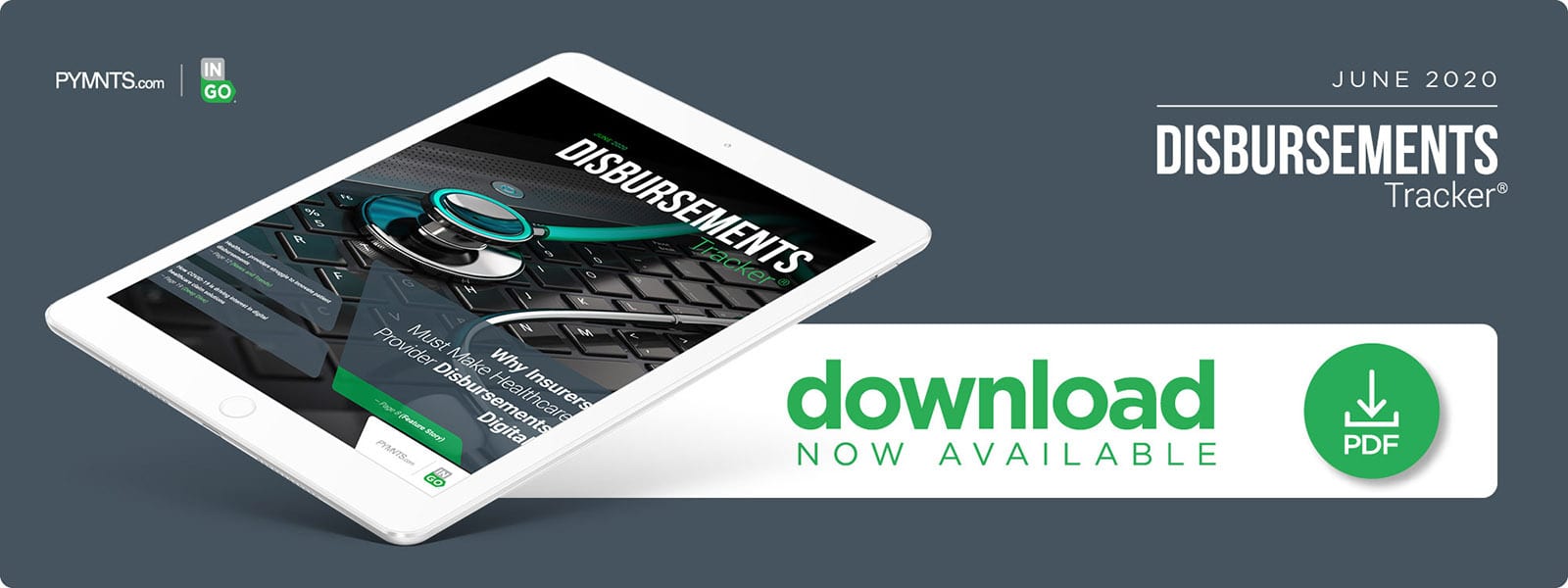Why Insurers Must Make Healthcare Provider Disbursements Digital

Complex billing codes and paper-based disbursements have long troubled independent primary care practitioners — frictions that result in treatment delays during the pandemic. Andrew Toy, chief technology officer for health insurance provider Clover Health, explains how machine learning can help resolve billing issues, disburse payments near-instantly and close the healthcare and patient billing service gap in the latest Disbursements Tracker.
The COVID-19 pandemic has created immediate, large-scale problems that healthcare providers must quickly solve to keep from being overwhelmed.
They must deal with dwindling supplies of medical equipment, like masks, as well as manage medical centers and care networks that have been stretched to capacity. These providers must also be sure they are serving workers’ needs and ensuring physicians are promptly paid.
Healthcare providers are still using old-fashioned systems that stash electronic health records (EHRs), patient data and medical coding information on servers in physical offices. That means off-site physicians may struggle to figure out how much they are owed even before disbursements can be sent to them, Andrew Toy, president and chief technology officer at health insurance startup Clover Health, told PYMNTS in a recent interview.
This is a pressing issue even for doctors meeting with patients using telehealth services, he added, since billing information is kept on servers that are connected to the doctors’ offices and not to their homes.
“The issue is [physicians] could only bill through their EHR, [but] they do not have access to their EHR at home,” Toy said. “Even if they can administer the service over telehealth, they struggle to bill.”
Doctors do not have remote access to these records because their office servers are not typically connected to the cloud, he explained. Many also lack virtual private network (VPN) connections — which link private networks to computers that have been secured and approved by the companies and institutions that use them — to their office servers. Enabling physicians to remotely access their offices’ servers would require capabilities that the industry is still struggling to add.
Connectivity is not the only hurdle affecting disbursements, however. Many of these payments are sent via outdated methods like paper checks, he continued. Clover Health, which provides Medicare Advantage coverage for approximately 55,000 members, is working to simplify the process by enabling providers to receive digital disbursements. COVID-19’s impact has left physicians struggling to keep up with increased patient demand while also managing their own billing and disbursement needs, Toy explained, and that has highlighted the need for such innovations in the healthcare industry.
Exposing Systemic Disbursement Issues
Physician and customer frustrations with healthcare payment processes are not new, but the pandemic appears to have highlighted the systems’ weak points. Lagging server speeds, billing complexities and paper checks’ time-consuming paths are pain points that the pandemic has exacerbated for both insurers and healthcare providers.
Developing solutions that can assuage these problems is becoming more critical. Clover Health’s Clover Assistant tool for primary care payments was designed before the pandemic to speed along this process, Toy explained. It uses machine learning (ML) to automatically fill in coding and billing details for physicians, then allows payments to be sent directly and near instantly to doctors with help from Clover’s third-party payment provider.
“We want to hugely simplify the way primary care physicians actually get paid,” Toy said. “What we have done is we have gone to them and said, ‘What we are going to do is simplify all the billing codes for [physicians], so [they] do not have to pick between billing code A or billing code C.’ Instead of doing all that work, we know [physicians] just want to focus on primary care and just do that best.”
Simplifying payments allows doctors to allot more of their time and attention to the health services they provide, he added. The company still supports disbursements through wire transfers and paper checks should doctors choose to retain their traditional payment options, and many disbursements are sent via checks once the billing paperwork is sorted out, Toy said. Getting paid this way means doctors are stuck waiting days for payments, however, and the COVID-19 pandemic is only exacerbating these long waits.
“First of all, where are the paper checks going?” Toy asked. “[They go] through the office. Who is at the office? I think there are other scenarios [where COVID-19 has affected] disbursements as well, such as when looking at EHR. A lot of the times, that billing is actually processed by [doctors’] medical assistants and their nurses, and they are having collaboration issues because they are not used to working from home. They are used to working all in one office. You cannot poke your head out of the door and say, ‘Oh, do not forget to add that to the claim.’”
Frustrations caused by late payments and remote working also cost physicians valuable time when they need to deal with payment issues rather than focus on healthcare. This issue has become more prevalent during the pandemic but will likely have future implications as more patients discover the convenience of telehealth services.
Telehealth Medicine’s Future
The COVID-19 pandemic has prompted many consumers to search for digital solutions to access their doctors without visiting physical offices or hospitals. Telehealth solutions are experiencing an increase in interest and adoption, and this trend will likely continue in the coming years.
Billing and disbursement tools must be innovated to match telehealth services’ speed and efficiency, Toy explained. Clover launched a telehealth solution for physicians in New Jersey in late March that uses cloud technology to match EHR records with payments for easy billing. This will enable them to provide healthcare services without falling back on paper checks.
“From a payments perspective, one [of the issues] is that there are still people [paying] with paper checks,” Toy said. “You would think that everything would be electronic right now, but that is just not the case. All the usual problems you have around paper still exist. … It is a significant amount of paper, and that is based on the physician’s practice. That practice has requested that they still be paid by paper checks because their systems are older, and they are just not able to handle electronic payments.”
The inability to handle digital disbursements during the COVID-19 pandemic is creating costly payment delays for physicians and their patients, meaning solutions must be a top priority for healthcare providers, insurers and payment partners. Understanding how to minimize the industry’s reliance on check disbursements will be key to ensuring healthcare providers can focus more on care and less on payment concerns, both now and in the future.

